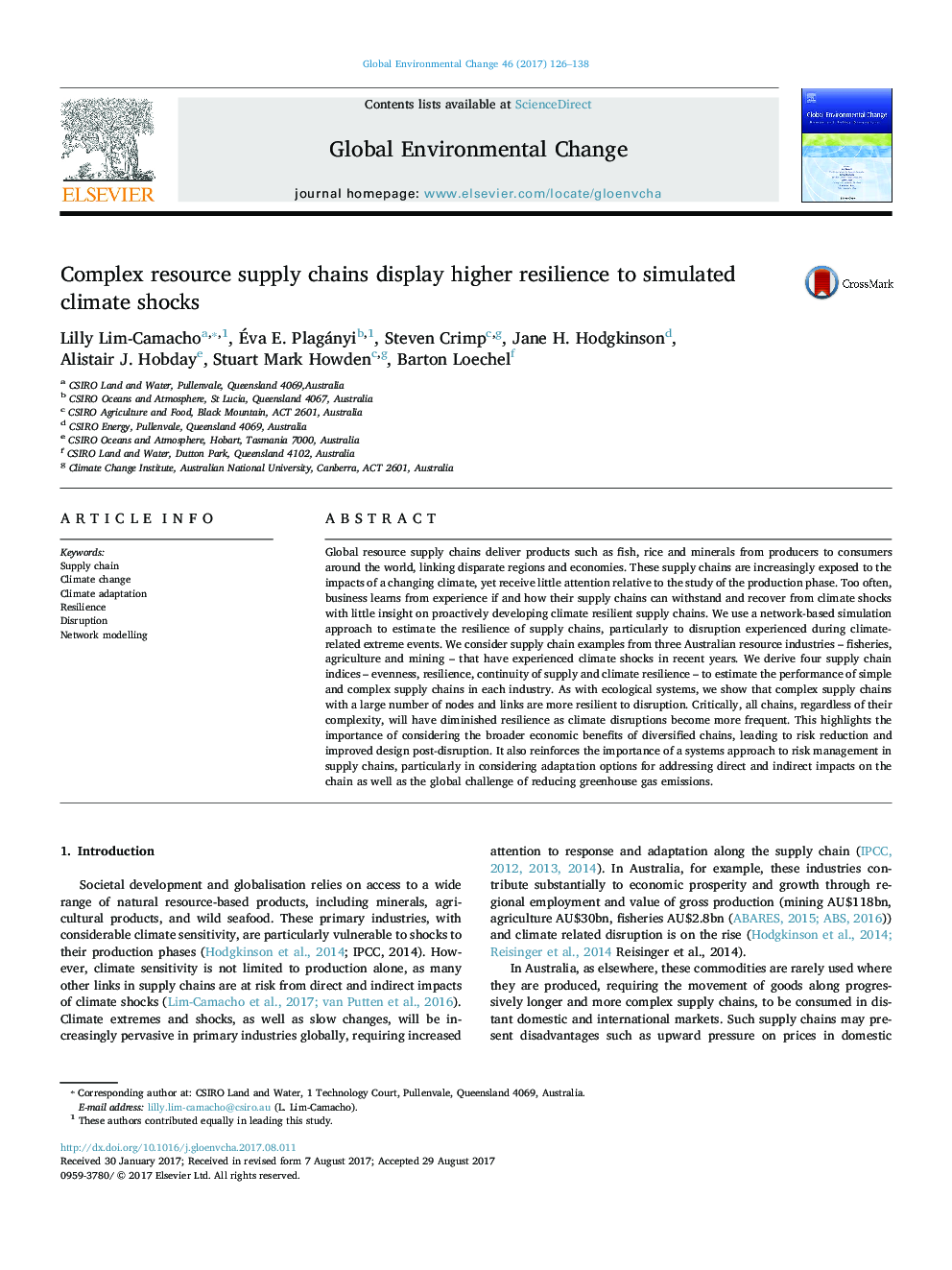| Article ID | Journal | Published Year | Pages | File Type |
|---|---|---|---|---|
| 5115889 | Global Environmental Change | 2017 | 13 Pages |
Abstract
Global resource supply chains deliver products such as fish, rice and minerals from producers to consumers around the world, linking disparate regions and economies. These supply chains are increasingly exposed to the impacts of a changing climate, yet receive little attention relative to the study of the production phase. Too often, business learns from experience if and how their supply chains can withstand and recover from climate shocks with little insight on proactively developing climate resilient supply chains. We use a network-based simulation approach to estimate the resilience of supply chains, particularly to disruption experienced during climate-related extreme events. We consider supply chain examples from three Australian resource industries - fisheries, agriculture and mining - that have experienced climate shocks in recent years. We derive four supply chain indices - evenness, resilience, continuity of supply and climate resilience - to estimate the performance of simple and complex supply chains in each industry. As with ecological systems, we show that complex supply chains with a large number of nodes and links are more resilient to disruption. Critically, all chains, regardless of their complexity, will have diminished resilience as climate disruptions become more frequent. This highlights the importance of considering the broader economic benefits of diversified chains, leading to risk reduction and improved design post-disruption. It also reinforces the importance of a systems approach to risk management in supply chains, particularly in considering adaptation options for addressing direct and indirect impacts on the chain as well as the global challenge of reducing greenhouse gas emissions.
Related Topics
Life Sciences
Environmental Science
Environmental Science (General)
Authors
Lilly Lim-Camacho, Ãva E. Plagányi, Steven Crimp, Jane H. Hodgkinson, Alistair J. Hobday, Stuart Mark Howden, Barton Loechel,
